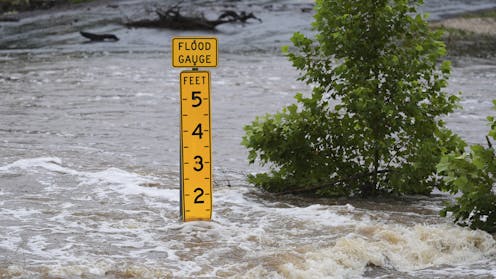Flash floods, such as the one that impacted the Guadalupe River in Texas on July 4, 2025, highlight the challenges of effectively communicating risks associated with severe weather events. While advanced flood prediction models exist, the success of emergency alerts hinges on how well they are understood and acted upon by the public. This understanding requires a comprehensive approach that blends technology with insights into human behavior.
Researchers specializing in emergency communications, including Keri K. Stephens, have found that simply presenting technical information does not guarantee that people will recognize or respond to threats. Their studies indicate that individuals who have personally experienced flooding are typically more aware of the associated risks. In contrast, those who have never faced such events often lack a clear understanding of various flood-related dangers, such as storm surges and flash floods.
Understanding Human Behavior in Emergencies
Emergency response teams frequently engage in training exercises to prepare for floods. However, community-wide participation in these drills is still limited. Understanding how people interpret flood warnings is crucial for effective communication. For instance, messages like “Turn Around Don’t Drown” may not resonate uniformly across different demographics. As a response, Stephens’ team has collaborated with the Texas Water Development Board to refine messaging strategies that better engage specific groups.
One innovative approach includes the phrase “Keep Your Car High and Dry,” which targets young adults. This demographic may feel invulnerable but is likely to respond to threats to their vehicles. Research suggests that personalizing messages can significantly improve their effectiveness, as individuals often downplay warnings perceived as irrelevant to their immediate environment.
Surveys reveal that many people dismiss flood warnings, believing they do not apply to their areas. Statements like “Another flash flood warning. It’s never about flooding where I am” underline a common challenge in flood risk communication. Different interpretations of the same alert can arise based on an individual’s proximity to the impending danger.
Effective Communication Strategies
Beyond technological solutions, informal networks play a vital role in disseminating critical information during emergencies. Emergency managers often communicate directly with local businesses and organizations to ensure that warning messages reach those most at risk. This human-centered strategy is particularly effective, especially in instances where mass communication technologies fail, such as during power outages.
Research indicates that effective warning messages should include five essential components: a clear hazard description, location-specific information, actionable guidance, timing cues, and a credible source. The Federal Emergency Management Agency’s integrated public alert and warning system, known as IPAWS, aids authorities in crafting these messages. Despite its benefits, IPAWS has limitations, including the need for better training for emergency managers and the challenge of reaching older mobile devices that may not support the latest alert capabilities.
Local opt-in systems can enhance communication efforts by allowing residents to receive targeted notifications. These systems face their own hurdles, including public awareness and the necessity for individuals to provide and update contact information. Social media has emerged as an additional channel for disseminating updates, although its reach can be limited to specific demographics.
Research emphasizes the importance of redundancy in communication channels. Multiple alerts can foster a sense of urgency among the public. As noted by former Natural Hazards Center Director Dennis Mileti, interpersonal communication remains one of the fastest methods to circulate information during emergencies.
Addressing Warning Fatigue
Professionals from various organizations, including the National Weather Service and FEMA, express growing concerns about warning fatigue. This phenomenon occurs when individuals become desensitized to alerts due to frequent notifications. The implications of warning fatigue are significant, as officials face the dilemma of needing to issue alerts while also risking public dismissal of important warnings.
More research is required to understand the nuances of warning fatigue and how it affects different communities. It is crucial to differentiate between warnings that may seem irrelevant to individuals and those that genuinely do not pertain to them. This distinction is particularly vital when considering how people might inadvertently enter flooded areas beyond their immediate surroundings.
The path forward involves developing messages that resonate with distinct audiences while fostering community networks that complement technological systems. Ongoing research aims to enhance the effectiveness of flood communication both in the United States and internationally. It is essential to incorporate behavioral insights into the design of communication systems and to rigorously test these systems at all levels, from threat identification to community response.
In summary, while technology can support human decision-making, it cannot replace the need for clear and effective communication strategies during emergencies. The integration of behavioral understanding with existing systems is vital to ensure that communities are adequately prepared for flood risks.



























































